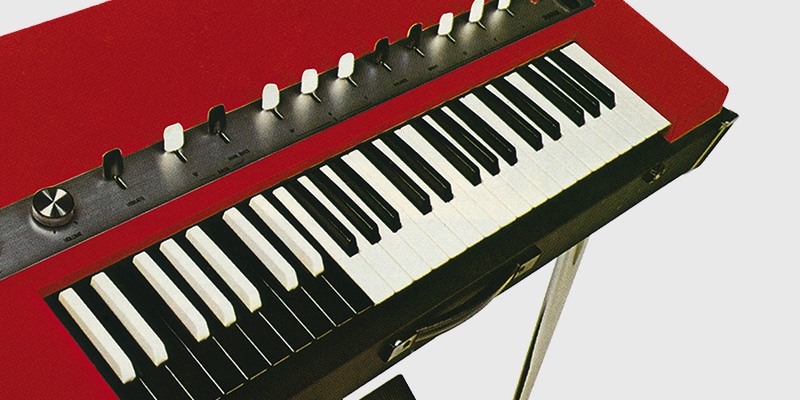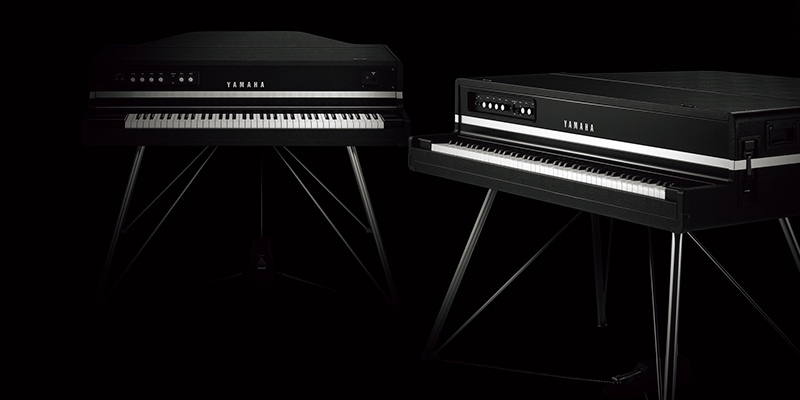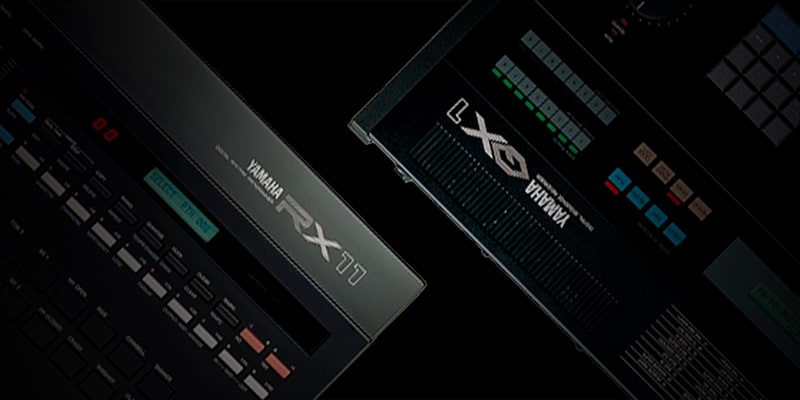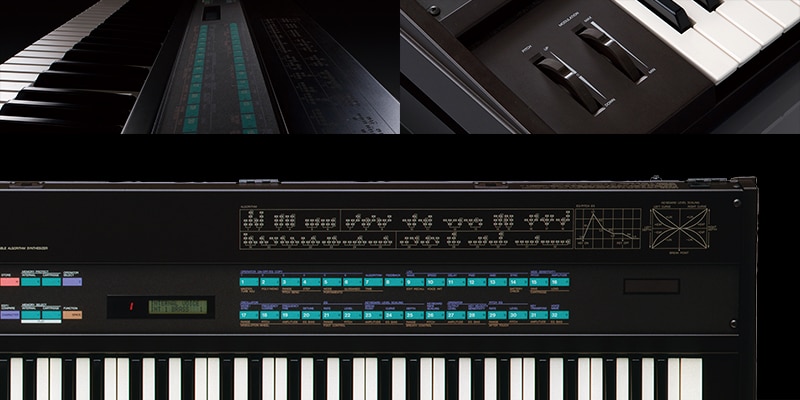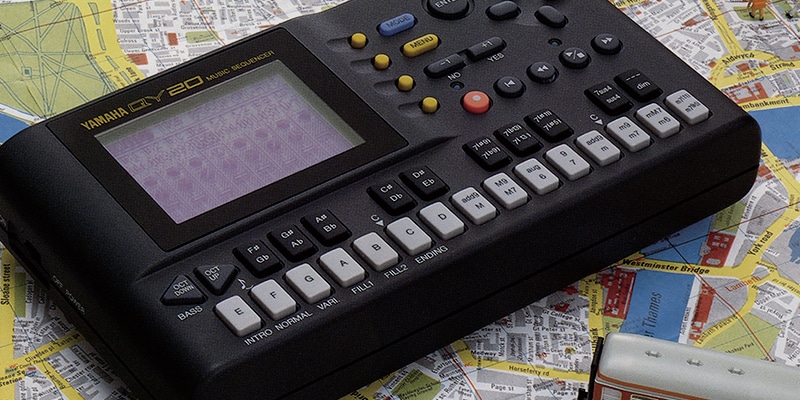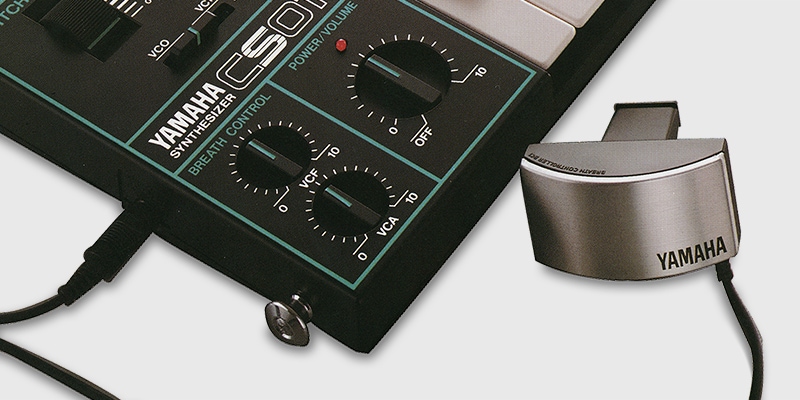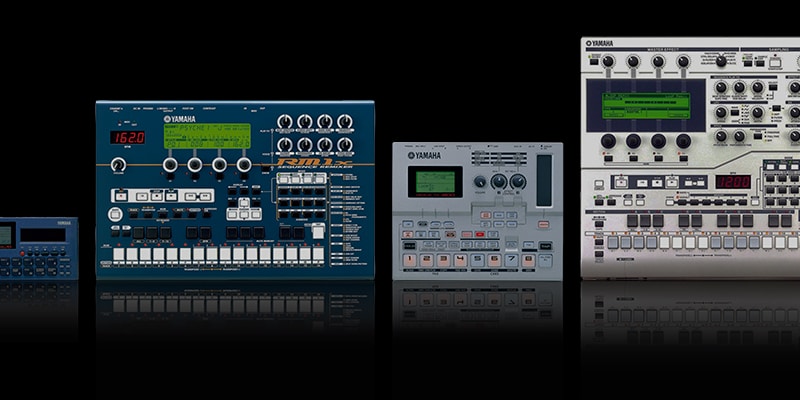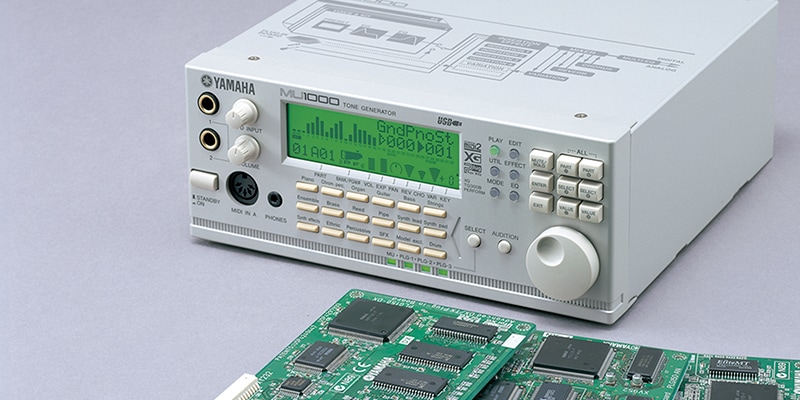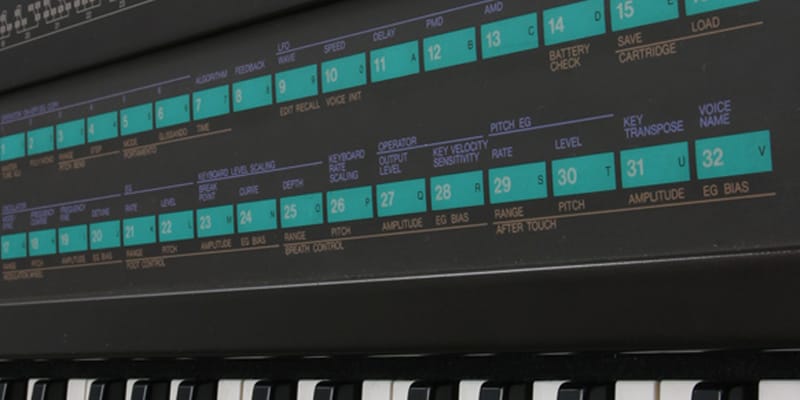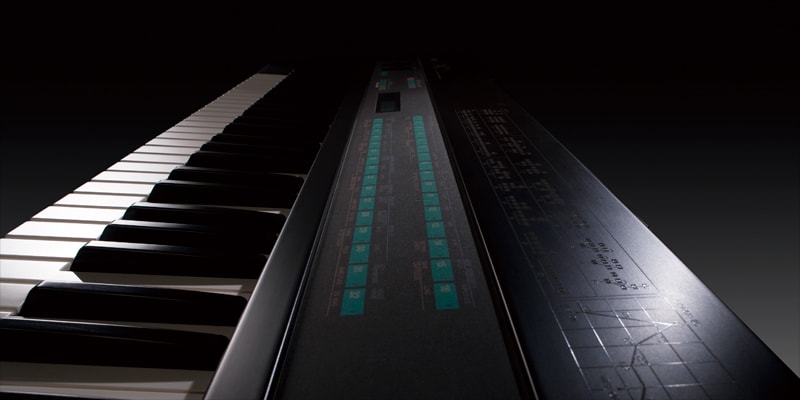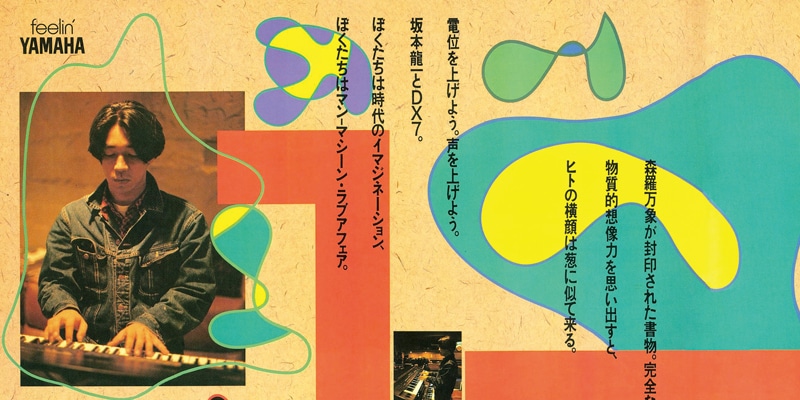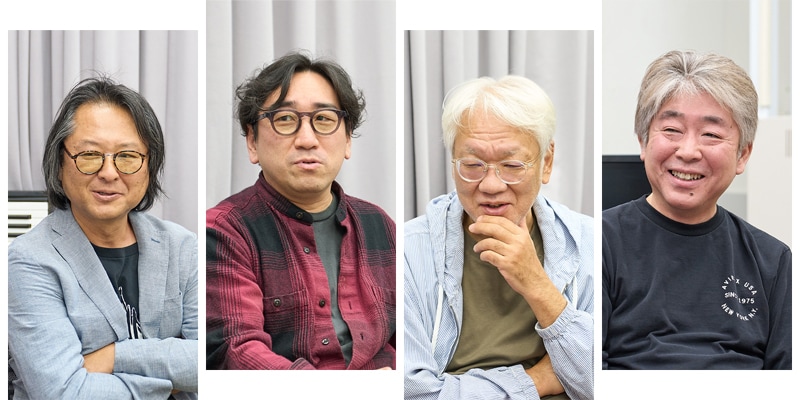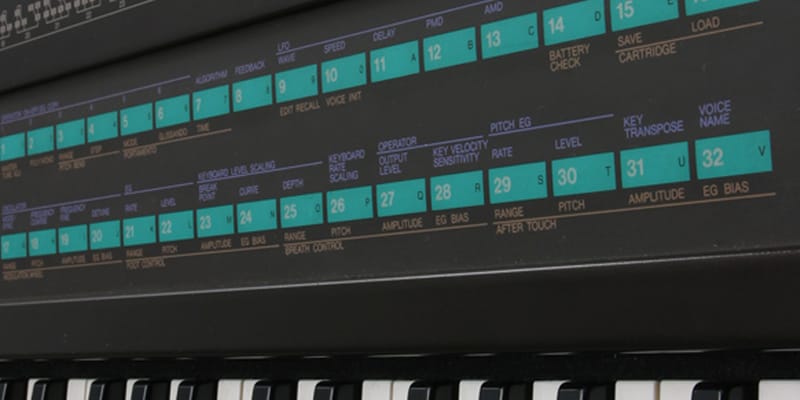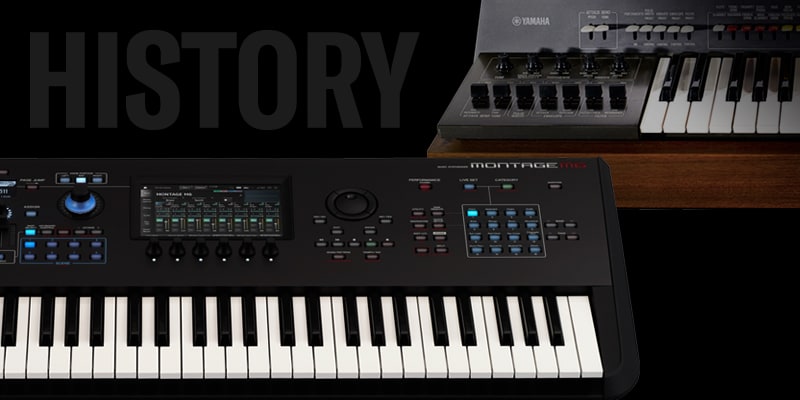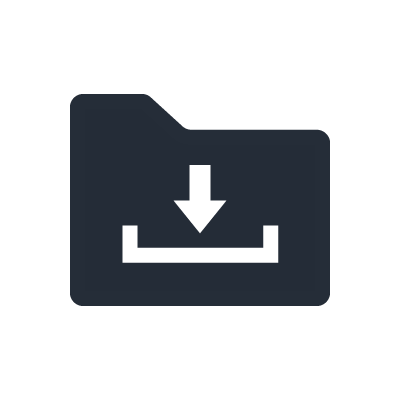Synthesizers and Dance Music
The word “synthesizer” usually conjures up the image of conventional piano-type keyboard instruments, but synth components are also found in gear used by DJs, dance musicians, and other creators more commonly associated with turntables and mixers.
In 1995, Yamaha released the SU10 — a sampling unit that, similar to the QY sequencers we had introduced earlier the same decade, fit into a compact video cassette-sized package. While samples freely recorded in CD-quality audio could be assigned to individual pads, the SU10’s real benefit came in the form of daring new features that opened up performance options not available with traditional keyboards, like a ribbon controller that allowed the user to scratch and crossfade samples.
Our SU700 and RM1x of 1998 were both big hits with performers who did not want to be tied to traditional keyboards. Capable of sampling up to 22 seconds of CD-quality audio with the factory 4-MB memory, the SU700 sampler also incorporated a sequencer, digital mixer, and FX unit, allowing for loop-based track creation with any combination of samples the user desired. Meanwhile, as a MIDI sequencer with a built-in AWM2 tone generator, the RM1x could also be played in real time using knobs freely assignable to control parameters and pads arranged like piano keys.
With the Yamaha SU200, which went on sale in 2000, you could automatically sync up to six audio samples to the same tempo, opening the door to even more creativity in loop-based track making. Our DJX-II and DJX-IIB also entered the dance-music scene that same year with the aim of pushing the boundaries of DJ gear. Unusual for the time, these workstations came with built-in stereo speakers, allowing DJs to freely perform without the need for any other equipment, while the scratchpad on the DJX-IIB was inspired by those of the popular CD DJ rigs of the day. With these and a range of other features packing a mighty punch, the DJX-II and DJX-IIB were perfect beat controllers for dance musicians.

The following year, in 2001, we combined our SU700 and RM1x into a new release — the RS7000. Designed for desktop music production, this groovebox was not so much a dance-music instrument as a MOTIF-like workstation of the same era. That said, the RS7000 did not require a traditional keyboard to create tracks, and its approach to making music shared common roots with a growing trend among club musicians of the day to combine step sequencers with Eurorack synth modules.
Also introduced to the market in 2001, our AN200 and DX200 desktop grooveboxes each contained a tightly integrated step sequencer and synthesizer — an analog physical-modeling AN tone generator in the AN200; frequency modulation (FM) in the DX200. Both units also had an AWM2 tone generator for drum tracks. Neither claimed to be a complete, standalone workstation for music creation; rather, they catered for a new style of track making where looped phrases were manipulated in real time. Together with our SU200 sampler, these units formed part of the Yamaha Loopfactory Series, from which multiple devices could be combined into more potent systems.

This style sequencer concept lives on today in the arpeggiator of our MOTIF series products, and as a professional-grade feature capable oAfter a hiatus of about two decades where very few new groove-gear devices were released for dance musicians, we welcomed the SEQTRAK to the Yamaha family in January of 2024. Offering a brand-new approach to music creation and performance, this mini production studio comprises a drum machine, a synthesizer and sampler, and a sound design and FX section, all packed into a remarkably compact form factor containing a rechargeable battery. Also equipped with a built-in speaker and microphone, the SEQTRAK can quite simply be used to make music anywhere. Equally significant, its capabilities as a music production studio set it apart from regular DJ equipment and groove gear. For example, it incorporates the concepts and technologies of vintage dance-music machines from the pre-2001 era, such as the integrated tone generator and sequencer functionality of the RM1x, the sampling capabilities of the SU Series, and the FM-based sound generation of the DX200. And similar to the DJX series, it can produce its own sound without the need for external speakers. The new style of track making encapsulated in the SEQTRAK is perfectly tailored to the needs of today’s performers, who use social media and other similar online services to stay connected to fans and followers all over the world.




